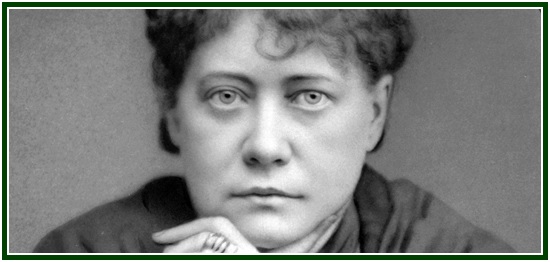
It Is Possible to Enter into the
Inward Being Even of a Rock or Stone
Radha Burnier

Radha Burnier (1923-2013)
000000000000000000000000000000000000000000
The following text corresponds to chapter 8
of the book “Truth, Beauty and Goodness”,
by Radha Burnier, TPH, India, 1985, 72 pages.
0000000000000000000000000000000000000000000000
In Plato’s works, Socrates is described as teaching his disciples by questioning them as to the meaning of words of fundamental importance, like love and beauty. As definitions were offered, he critically examined them and pointed out the fallacies in the conceptions leading to the definitions. Such a method and critical evaluation was also adopted by the Buddha and other teachers of ancient times.
Most of us, if we were asked to do so, would find it difficult to define such words as beauty and goodness, so as to take in the depth of implication and the true import of the terms. But an attempt along this direction can be extremely rewarding, enabling us to journey into fields of thought till now unknown and into a validity of experience which suffers no contradiction, for it is only meditative experience of the quality in question which makes it possible to give a true definition.
We will briefly try to examine what is art and what is the place of beauty in it. One could say that ordinarily art refers to creations by man intended to be beautiful. It is obvious that all that is beautiful is not art, for we do not refer to natural beauties such as the trees and the flowers, the sky and the stars, or the beauty of character in a human being or the loveliness of innocence in a child as art. Art is the creation of man as opposed to the works and wonders of Nature.
In the museums of the world, many curious works find a place among objects of art – patches of colour jumbled up, a caricature of the human figure with an eye in the stomach, or a nose at the back of the head, and works of so-called sculpture which are incomprehensibly unattractive to all except the few. There is also music which sounds like noise, or shatters the nerves. In many of these cases, one may find an exhibition of ingenuity or skill and the desire for intellectual or emotional stimulation, resulting in ugliness, not beauty. A true work of art may show extraordinary skill, but in addition it has to arise from a state of mind which is aware of beauty and is able to communicate it to others. Where the quality of beauty is lacking, although there may be intellectual or moral satisfaction, the pleasure of the emotions, the fulfilment of self-expression or anything else, the activity or creation is not art.
Poetry has been described as “lyrical intuition” – lyrical because it is imbued with feeling. Valmiki, the first among poets in the Sanskrit tradition, was able to create his magnificent work of art, the epic Ramayana, when he was moved by a strong feeling for the sorrow of a bird which had lost its mate. The at-one-ment he experienced with the bird led him into a meditation out of which resulted the poem which has inspired and still inspires millions of people all over India. Such an outflow of sympathetic feeling can exist for even the inanimate things of Nature. It is possible in some way to enter into the very being of things.
“To imagine things as they are for themselves is tantamount to imagining what they would be if they had an obscure consciousness of their own existence. Now we have only one way of thus imagining things from inside, and that is, to put ourselves inside them.” (Souriau)
The possibility of putting ourselves “inside” things and feeling as they do, is not limited to creatures which are akin to us, that is, other human beings. Even birds which sing in flight may seem akin to us, or a tree which grows and expands, enjoys the warmth of the sun or is buffeted by a storm.
It is possible to enter into the inward being even of a rock or stone, or the earth as it receives rain after a parched day.
“We [can] project ourselves not merely into the forms of the tree, identifying our life with that of the slender shoots which swell and stretch forth, feeling in our soul the delight of the branches which droop and poise deliciously in midair. We extend equally to lifeless things these feelings which lend them meaning. And by such feelings we transform the inert masses of a building into so many limbs of a living body, a body experiencing inner strains which we transport back into ourselves.” (Lao-tze)
So the artist has the capacity to feel from the inside. But as we all know he can do this without being a thinker, without understanding what he does, and without manifesting a virtue he portrays. He may sing of a courageous soul, in inspiring tones although “he may not be endowed with great practical courage; he may even betray signs of timidity and cowardice”; but for the time he feels the dignity of courage.
This “lyrical intuition” or feeling of oneness is a limited form of goodness. It exists adulterated with a desire for fame or immortality, envy and jealousy, instability and insensitivity, and other traits commonly found in artists. The artistic temperament is well known to be volatile and uncontrolled. It is also a curious thing that an artist who sees and creates beauty in a particular object or field can be totally incapable of responding to beauty in other things or in another field. He can be quite insensitive to the charm of Nature. Even within a particular field, whether it be that of music, painting, or any other art, his response may be limited to a form or style to which he is accustomed.
We have to conclude that art arises out of seeing the truth of a thing from the inside, but it is also the product of a conditioned consciousness. The conditioned mind circumscribes or limits itself by identification with various experiences and experience-born desires. It is therefore selective in its approach to things, rejecting or ignoring some things, liking and embracing other things, or in other words reacting for or against according to the desires of the senses.
But neither the virtue of goodness, nor the quality of beauty, in the highest sense, are selective. Plotinus says that virtue exists in the soul when the soul tends to unity. Shelley also spoke of this:
“Let us recollect our sensations as children. … We less habitually distinguished all that we saw and felt from ourselves. They seemed as it were to constitute one mass (or whole). There are some persons who in this respect are always children. … [they] feel as if their nature were resolved into the surrounding universe or as if the surrounding universe were resolved into their being.”
Such a childlike purity of consciousness which does not create barriers around itself, separating itself from others, is alone capable of realizing the universal and enduring quality of Beauty.
Separateness is to circumscribe oneself. The circumscribed mind can only see circumscribed beauty. It desires, as Plato said, to express or immortalize itself in many ways, by leaving behind artistic or intellectual progeny, poems, songs or the constitutions of States.
But as long as the desire to attain the One Beauty is envisaged as satisfied by the production of entities other than ourselves, there is imperfection, said Plato. For the desire which impels such productions is rooted in the pleasures of the circumscribed self. “Pleasure is the greatest of impostors”, to quote Plato again. The beauty that is known and created by the conditioned and limited mind, which chooses the objects with which it unites itself, has necessarily a perishable quality. The goodness such a mind knows is also limited to the moments of lyrical intuition. It is “Beauty that is appended to folly”, to quote Blake.
But the quality of Beauty as such, not merely confined to the products of art, is uncircumscribed and universal in nature. Ruskin said that it stands related to all things.
“The new virtue which constitutes a thing beautiful is a certain cosmic quality, or, a power to suggest relation to the whole world, and so lift the object out of a pitiful individuality…. All beauty points at identity.”
So Beauty may be described as the passage out of the limitations of individuality, out of the selectiveness of a conditioned self [1], into the vastness of universal sympathy. Beauty is, therefore, liberty and love. It is to be free of the captivation of the senses and sense objects, and the lure of all perishable things. In such liberty, which is true sympathy for all, not for some selected objects only, there is the goodness which may be called love. Goodness does not choose; it embraces all.
“For love and beauty and delight
There is no death, nor change; their might
Exceeds our organs, which endure
No light, being themselves obscure.” (Shelley)
“Heaven-born, the soul a heavenward course must hold;
Beyond the visible world she soars to seek
(For what delights the sense is false and weak)
Ideal Form, the universal mould.
The wise man, I affirm, can find no rest
In that which perishes; nor will he lend
His heart to aught that doth on time depend.” (Michelangelo)
He who would know beauty may study musical harmony, the blending of colours, the balance of forms, but he must not be under the lure of these perishable forms, or confine himself to them.
“The good we get from art… is what we become through it”, said Oscar Wilde. He who does not love beauty in all things does not love it at all. The realization of beauty in all things is itself goodness, for it is the knowing of a universal truth. So Beauty is the constant companion of goodness.
“The search for beauty is inseparable from a life of purity, self-control and tenderness”, to quote C. Jinarajadasa.
NOTE:
[1] Of course, everything in the universe is karmically conditioned. There is nothing “unconditioned”. Even a Universe is conditioned in its Pralayas and Manvantaras, and every Manvantara or Pralaya has a certain Duration according to Karma. Mahatmas obey Karma and its Law and do not pretend to be “unconditioned”. They transcended the denser levels of Karmic Law operations, the Karma of blindness and ignorance. Radha Burnier here refers (as we would hope) but to the lower levels of conditioning, or the karmic conditions of spiritual ignorance and attachment to the five senses. (CCA)
000
The above text was published in the associated websites on 25 November 2020.
000
Tough personally well-intentioned, Mr. Jiddu Krishnamurti taught the false idea that one can become “unconditioned”. On the pseudoesoteric illusion of “transcending Karma”, click to read “Annotations on Karma”, “Immortal Sages Humbly Obey the Law” and “M.C.’s Text on Karma, Annotated”.
Read more:
000

Helena Blavatsky (photo) wrote these words: “Deserve, then desire”.
000